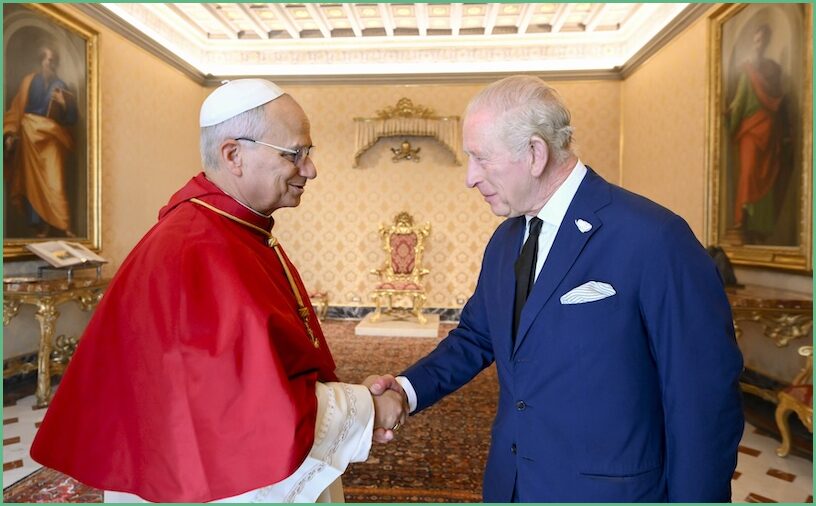Nearly five centuries after England outlawed the Mass, its monarch joined a Vatican service with Pope Leo for ‘Christian unity.’ This short piece looks at why that moment matters, what it signals about church and crown, and how history and ceremony collided in a single gesture. The visit is both symbolic and practical, a flashpoint for questions about identity, reconciliation, and the public role of religion in modern Britain.
The historical backdrop is sharp and unavoidable: the English Reformation reshaped religion and power across the British Isles, and outlawing the Mass was a deliberate act of statecraft. That rupture left deep scars and a tangled legacy of laws, loyalties, and memories that linger in ceremonies and headlines. When a reigning monarch appears inside the Vatican, those old fault lines get a new shine, inviting fresh commentary about continuity and change.
What makes the Vatican service notable is the mix of theology and theater. A sovereign who is head of the Church of England attending a Catholic liturgy highlights the sheer theatrical power of public religion. It’s not just a private act of devotion; it’s a staged moment that communicates to domestic and global audiences. In that sense, the visit works like any major state ritual: it tells a story about who we are and what we value.
For many observers, the event reads as a gesture of reconciliation. Ecumenical efforts have grown for decades, and leaders on both sides have worked to soften doctrinal walls and build common ground. The phrase ‘Christian unity.’ floated in commentary captures that wish: leaders trying to show unity without collapsing difference. Such gestures matter because they can lower tensions and open channels for cooperation on social and moral issues.
Yet symbolism can provoke as much as it soothes. There are people who see this kind of rapprochement as erasing distinct religious identities or glossing over past injustices. Others worry about constitutional implications when a monarch with formal ties to one church accepts honors or invitations from another. Those anxieties are rooted in real questions about authority, precedent, and the public trust that surrounds the crown.
The practical consequences tend to be less dramatic than the headlines suggest, but they are worth noting. Diplomatic and interfaith lines can strengthen after high-profile encounters, and small, concrete collaborations often follow: shared charitable projects, joint statements on social concerns, or coordinated pastoral outreach. At the same time, policy and law remain the domain of elected institutions, and a ceremonial visit rarely shifts legal boundaries overnight.
Public reaction is a mirror of culture and context. For some, the service is a hopeful sign that long-standing enmities can soften in favor of common work. For others, it feels theatrical and out of step with the frustrations of everyday life. Media coverage tends to magnify the dramatic edges, but the real test is whether such moments translate into steady, practical cooperation that citizens actually experience.
So the image of a monarch standing alongside a pope is more than a photo op; it’s a shorthand for larger debates about identity, history, and the role of religion in public life. The scene draws on centuries of shared and divided history, and it forces a conversation about how traditions evolve. Whether the event proves merely symbolic or becomes a hinge for deeper change will depend on what follows in policy, practice, and parish life.

1 Comment
Now this FAKE pope picks up where Bergoglio left off with the playing globlal political agenda promoter! When will he appear at the Davos WEF Demonic Globalist Cabal?
Figures, Bergoglio is a Freemason cultist and so is this one!